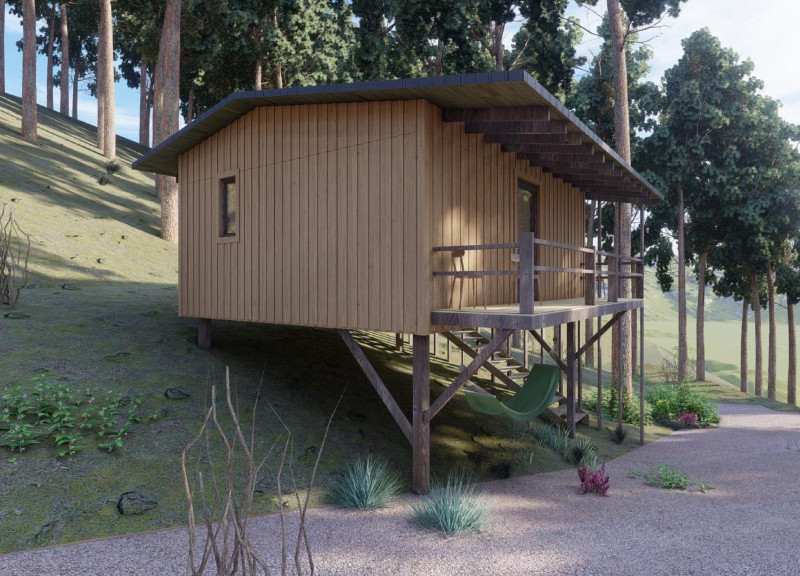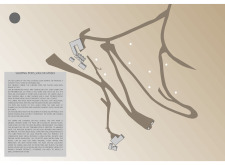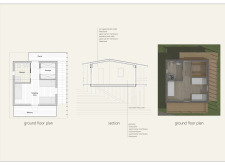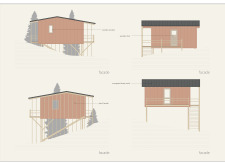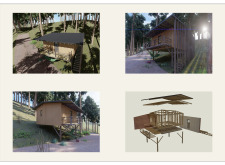5 key facts about this project
The Sleeping Pods project at the Vale de Moses Yoga Retreat is a meticulously designed architectural initiative aimed at providing eco-friendly accommodations that blend seamlessly into the natural landscape. Located on a sloped terrain surrounded by pine forests, this project emphasizes sustainability and functional living. The design focuses on modularity, allowing for efficient construction while enhancing the retreat's commitment to environmental responsibility.
The sleeping pods serve as private units for individuals, couples, or small groups, maintaining a balance between solitude and communal engagement. Each pod features well-defined spaces including a sleeping area, a compact bathroom, and an outdoor balcony. The layout prioritizes ease of access while minimizing disruption to the natural surroundings. The strategic placement of these units not only preserves the site's topography but also maximizes views and promotes a sense of tranquility.
The sleeping pods represent a fusion of contemporary architecture and the core principles of mindfulness and relaxation associated with yoga retreats. They serve an essential function by providing users with comfortable, secluded spaces that foster both personal reflection and community connections.
Architectural Integrity and Sustainable Practices
The project distinguishes itself through its unique approach to materiality and design. The primary materials used include sustainable wood, corrugated sheet metal, fiberboard, and insulated membranes. This careful selection of materials not only supports environmental integration but also addresses climate concerns, offering insulation and thermal stability for year-round comfort. The use of locally sourced materials further reduces the carbon footprint associated with transportation and construction.
A notable feature of the design is the modular construction method, enabling rapid assembly and disassembly, should the need arise. This flexibility in design aligns with the principles of sustainability by minimizing waste and reducing the environmental impact often associated with traditional building techniques. The sleeping pods are elevated on stilts to protect the existing flora and fauna, a detail that underscores the project's commitment to ecological preservation.
Community and Space Utilization
The sleeping pods offer a balanced approach to personal and communal living. Each pod is designed to accommodate a variety of occupancy configurations, allowing for private retreats or shared experiences. The integration of outdoor balconies encourages interaction with the natural environment and fosters community ties among retreat participants. These balconies provide functional outdoor spaces for relaxation and contemplation, enhancing the overall user experience.
The architectural design also supports a harmonious relationship with the surrounding landscape. The arrangement of the pods along the hillside preserves sightlines and natural drainage patterns, ensuring minimal environmental disturbance. The strategic use of shading elements helps to moderate internal temperatures, further enhancing comfort while reducing reliance on mechanical heating and cooling systems.
To gain deeper insights into the Sleeping Pods project, readers are encouraged to explore details such as architectural plans, architectural sections, and architectural designs that illustrate the thoughtful execution of these design ideas. The emphasis on sustainable architecture and innovative space utilization exemplifies the project’s design ethos, making it a relevant study for contemporary architectural practices in eco-conscious environments.


